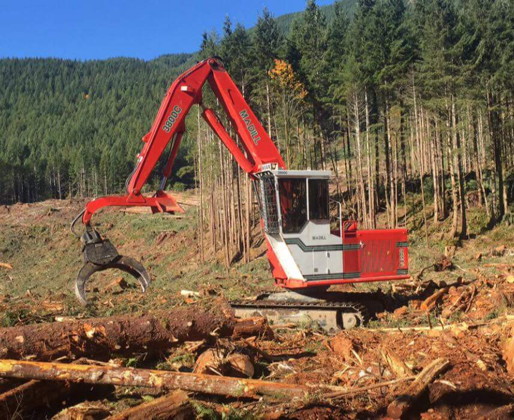PPF Comments on Proposed State Land Swap with Log Export Company M&R
 Merrill & Ring is working on a large land exchange with the Washington State Department of Natural Resources (DNR). To quote Josey Paul, “It will be mostly stumps for trees, will switch the DNR’s bad forestry management to the horrible practices of private timber companies. The DNR will acquire more land, but it will be mostly logged over land that will take decades to recover.” PPF submitted the following comments to DNR:
Merrill & Ring is working on a large land exchange with the Washington State Department of Natural Resources (DNR). To quote Josey Paul, “It will be mostly stumps for trees, will switch the DNR’s bad forestry management to the horrible practices of private timber companies. The DNR will acquire more land, but it will be mostly logged over land that will take decades to recover.” PPF submitted the following comments to DNR:
September 11, 2019
To: Project Manager Bob Winslow
Re: Proposed Peninsula Land Exchange 86-097165
Protect the Peninsula’s Future, a non profit corporation recognized by the Secretary of the State of Washington since 1973, concurs with comments submitted by one of its members, Josey Paul. Washington State Department of Natural Resources has a track record of better management of timber lands than private industry does. It is therefore puzzling the state is apparently planning to swap its more valuable lands, for poorly managed lands. Josey Paul’s comments are posted below:
Thank you, Bob:
I appreciate your quick, courteous and detailed reply. Below are my comments on the proposed Peninsula Land Exchange. By necessity, these comments are confined to the current and limited information available for this exchange:
I understand that my first three questions [MMBF of standing timber exchanged, effect on local taxes and effects on arrearage] cannot be answered until you have completed appraisals and finalized the list of properties in the proposed exchange. However, I don’t think anyone can reasonably comment on this proposed exchange until those questions are answered. As you know, a previous land exchange — the Foothills Land Exchange, which was largely a swap of logged lands for standing timber — created a log shortage at local mills. Public logs meant for local processing became private logs that were instead exported to China, along with the concomitant mill jobs. The local economy suffered as a consequence.
My concern is that this swap will cause similar problems for the local community and its economy; but without specifics, my comments would be speculative. Depending on timing, the arrearage concern is likely to be independent of the Sustainable Harvest Planning process underway. Ironically, the timber company that benefited from the arrearage created by the Foothills Land Exchange, shortly thereafter went on a public relations campaign that blamed the DNR for causing excessive arrearage — claims, that as you know, were untrue, but nonetheless triggered the state’s current look at arrearage.
And from an environmental perspective, this swap could expose state-managed lands to more severe and ecologically damaging harvests under the reduced regulatory burden enjoyed by timber corporations. In addition, those lands would be converted to 40-year rotations, down from the DNR average of 60-year rotations. To comment reasonably on this concern, anyone from the public would need to know how the swap would change patterns of land exploitation, which is an important concern in a time when most salmon runs in WRIA 19 and adjacent WRIAs are approaching extirpation caused, in large part, by industrial logging practices. DNR logging practices — and the current forest practice regulations — have not caught up to fisheries science, but DNR practices are better than private logging practices.
The last issue, valuation, also needs to be fully transparent and explained. Because private plantations operate under a reduced regulatory burden and because only logs taken off private lands can be sold on the lucrative export market, where export log prices run 25-50 percent higher than domestic prices, public forest lands are far less valuable than stands under private ownership. Valuations depend on multiple factors, but private ownership makes timber stands more valuable.
You mention that appraisals will value “properties to the highest and best use under current timber laws… .” Valuations, however, are determined by current timber laws, which make private timber lands more valuable than public forest lands. A DNR-managed stand may be worth $1 million under current timber laws. That same stand, under private ownership, could be worth $1.5 million or more, depending on current market conditions. If the appraisals are not valued to the new ownership, the private timber company will make windfall profits at the expense of the DNR’s trust beneficiaries. This issue must be clarified.
Thank you for giving me the opportunity to comment. I would appreciate being put on the stakeholder notification list.
Protect the Peninsula’s Future appreciates the opportunity to comment, and wishes to be placed on the stakeholder notification list as well.
Sincerely,
Steve Koehler—President, Protect the Peninsula’s Future
Cc: Commissioner Hilary Franz

